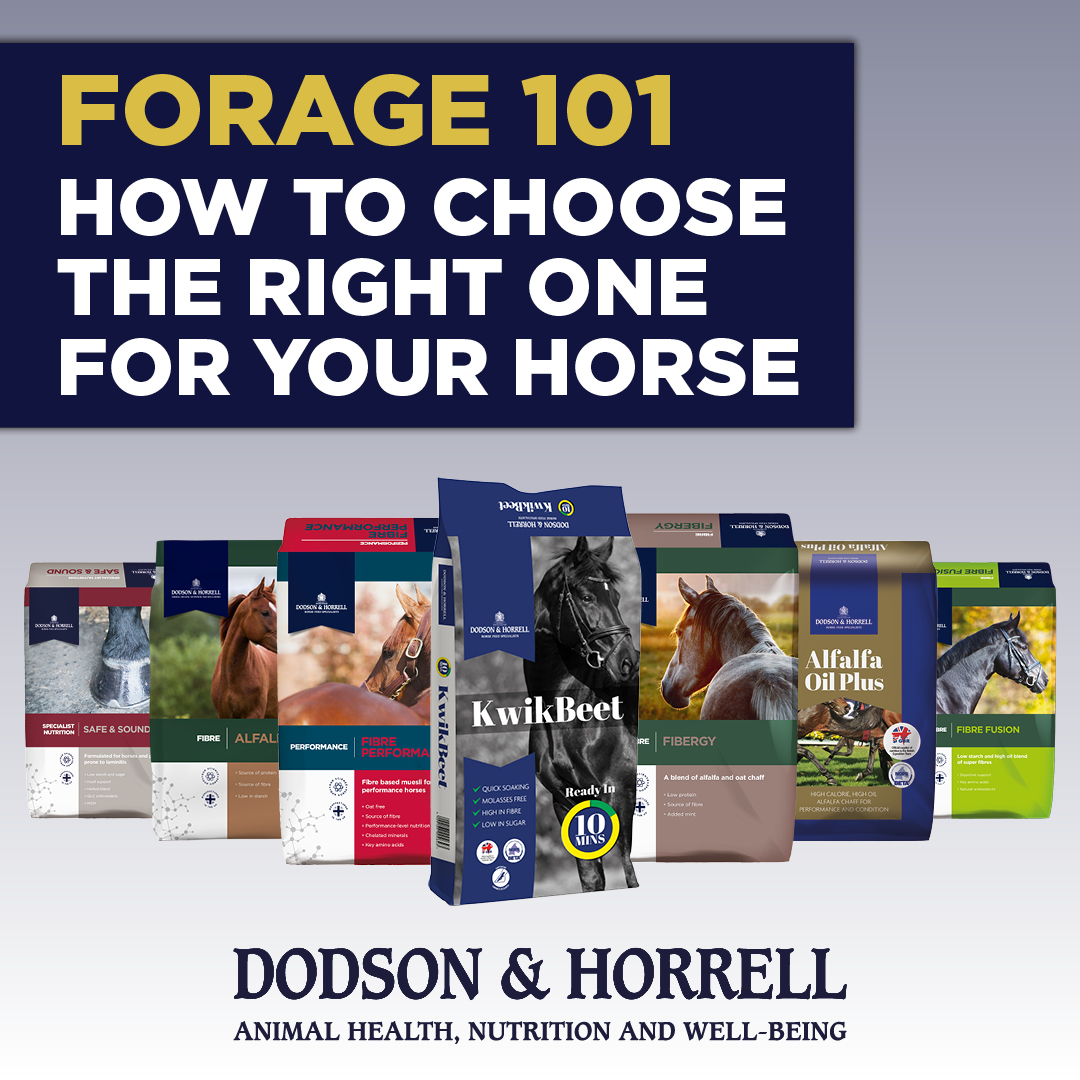Forage provides a horse with essential fibre which supports the optimal functioning of their gut. As such, they should have access to forage feed through much of the day and night. Forage should make up at least 50-60% of your horse’s daily diet. Most horses should be eating at least 1.5-2% of their bodyweight per day in good quality forage (weighed dry) to meet their recommended daily fibre requirements.
What are the different types of forage?
There are many different types of forage suitable for equine consumption:
- Hay
- Haylage
- Straw In limited quantities
- Grass
- Short-chopped fibres (Alfalfa or Blended Chaffs)
- Un-molassed sugar beet
Each type of forage provides fibre but to fully understand the nutrients your chosen type is providing your horse, having it tested by a professional lab is advisable.
More often than not, dried forages and hays will be low in vitamins and minerals. This deficiency can be countered by feeding fully balanced concentrates (mueslis, cubes, Balancers) or vitamin & mineral supplements. Nowadays, many short-chop fibres (chaffs) have support supplements included and some are fully balanced as well, like Dodson & Horrell's Safe & Sound and Fibre Performance. Dodson & Horrell's, Alfalfa, Alfalfa Oil Plus and Fibre Fusion are also brilliant sources of high-quality fibre, offering unique blends of different forage sources and support supplements, catering to differing needs. In addition, some mash products, and fibours raw materials like the un-molassed sugar beet in D&H's KwikBeet also provide alternative ways of including fibre in your horse’s diet.
Choosing the right forage for your horse’s workload needs

How to prepare your horse’s forage
There are lots of things to consider when preparing the forage you are feeding your horse or pony so here are some of our top tips:
- Choose high quality forage that has been prepared and stored in a clean, dry, environment
- Do not feed forage that has visible Issues (e.g. mould, ripped wrapping)
- Weigh your forage before feeding to enable you to monitor consumption. An easy way to do this Is to weigh your hay net with a luggage scale
- If your hay is dusty, rinsing, soaking, or steaming can help. Our Helpline would be happy to discuss which method might be most suitable for your horse
- It general, your horse should spend some time feeding from the floor each day, or grazing at pasture, to maintain their respiratory health. Some of their forage can be fed from the floor to encourage this stance
- Using a trickle feeding haynet or two haynets (one inside another) Is an option to encourage slower consumption In an overweight horse
- Ensure mashes and sugar beet are soaked thoroughly before feeding. Check whether you have a quick or slow soaking variety and follow manufacturer directions, as some beet pulps truly need to soak for many hours
The time your horse or pony spends consuming both long chop (i.e. hay or haylage) and short chop forages (i.e. alfalfa and oat-straw chaffs) helps positively support their entire digestive tract from the surfaces of their teeth through to their hindgut, as well as their psyche, helping to prevent boredom and supporting their ongoing health and wellbeing.
Our team of nutritional advisors are passionate about horses and are here to help, so if you need any advice or reassurance with your feeding regime, don’t hesitate to get in touch.




